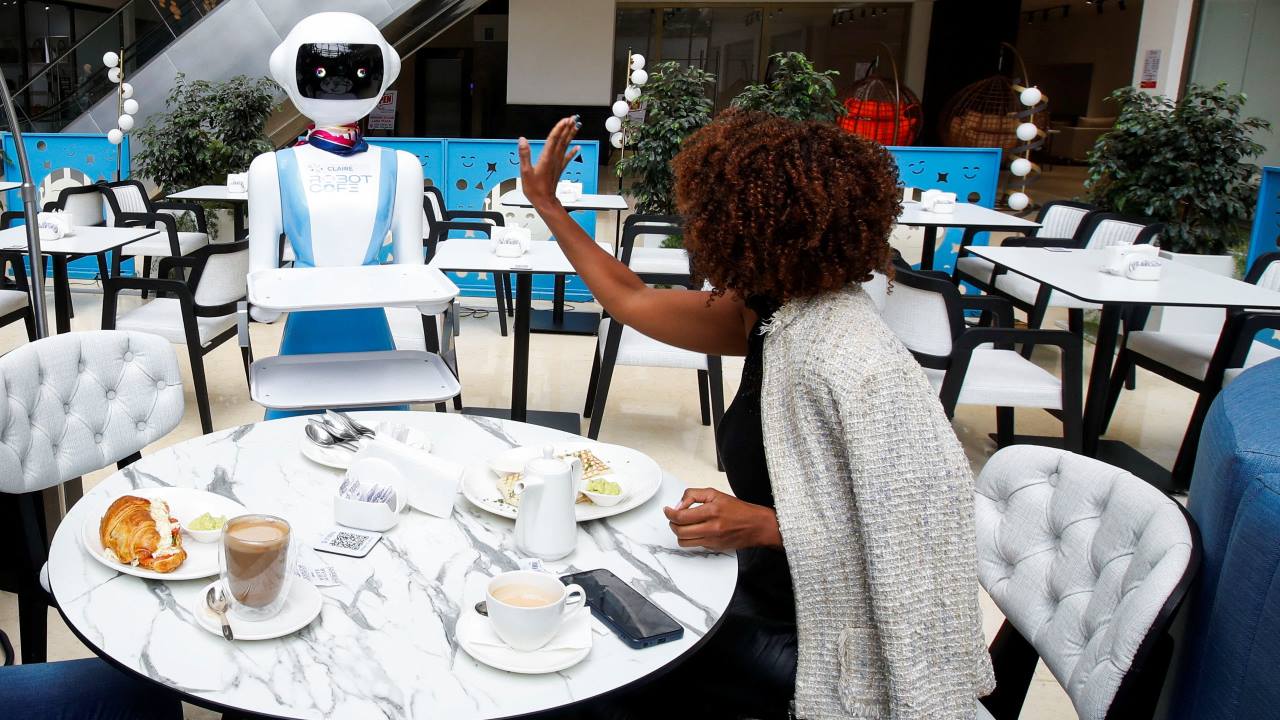Nairobi’s latest dining spot has become the talk of the town with the introduction of robot waiters named Nadia and Claire. The robots, which have been in operation for two months, glide smoothly between tables to deliver orders, capturing the fascination of locals.
“When we’re busy, especially on weekends, we have ten human waiters and three robots. These robots, which we’ve named, assist with service and do an excellent job,” said waitress Gladys Guda.
Customers use a QR code at their table to access the menu and place orders online. Once the food is prepared, a bell rings to alert a human waiter who places the food on a robot’s tray. The robots then deliver the food to the designated table after a few commands are entered on an iPad.
After their shifts, the robots are recharged overnight and are controlled from a central command center with specialized software.
While robotic waiters have been in use in countries like China, Japan, and the United States, this is a novel experience for many in East Africa. The restaurant has garnered significant attention and enthusiasm from patrons.
“It’s something unique. I’ve never seen a restaurant like this in Kenya before, so I think it’s a great idea from the owner,” said diner Packson Chege.
However, the introduction of robots has raised concerns about job displacement in Kenya’s hospitality industry, which employs many people. Manager John Kariuki addresses these worries, emphasizing that the robots are intended for entertainment, not to replace human staff.
“The robots are quite expensive, and using them to save money wouldn’t be effective. We’ve incorporated them to offer customers a glimpse of technology available in developed countries, mainly for entertainment purposes,” Kariuki said.
Edith Ojwang, an independent hospitality industry consultant, reassures that the diversity in the industry means robotic service will not entirely replace human labor.
“The hospitality industry is diverse. Some clients will prefer robotic service and automation, while others will favor the human touch. The variety of preferences means robotic service is not a threat to human labor,” Ojwang said.

